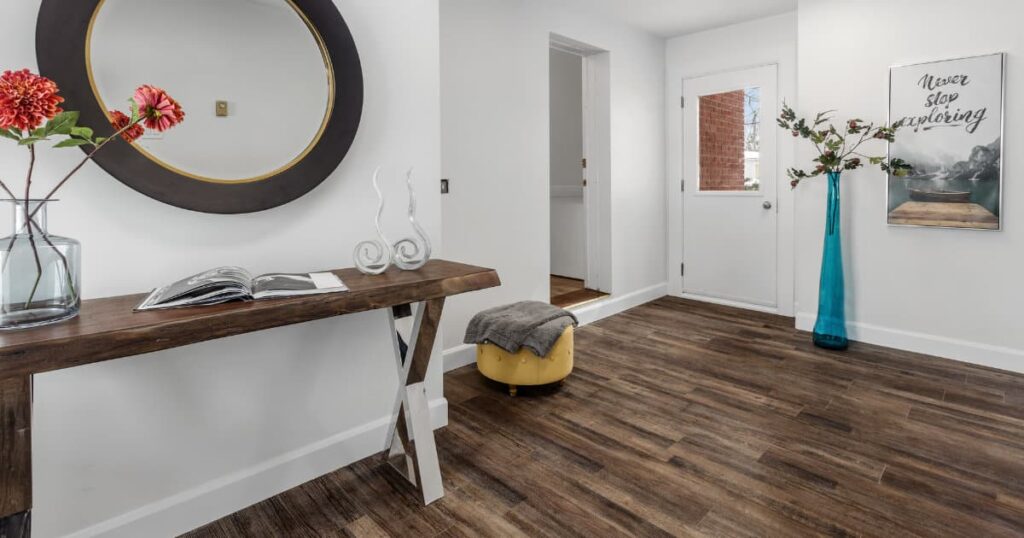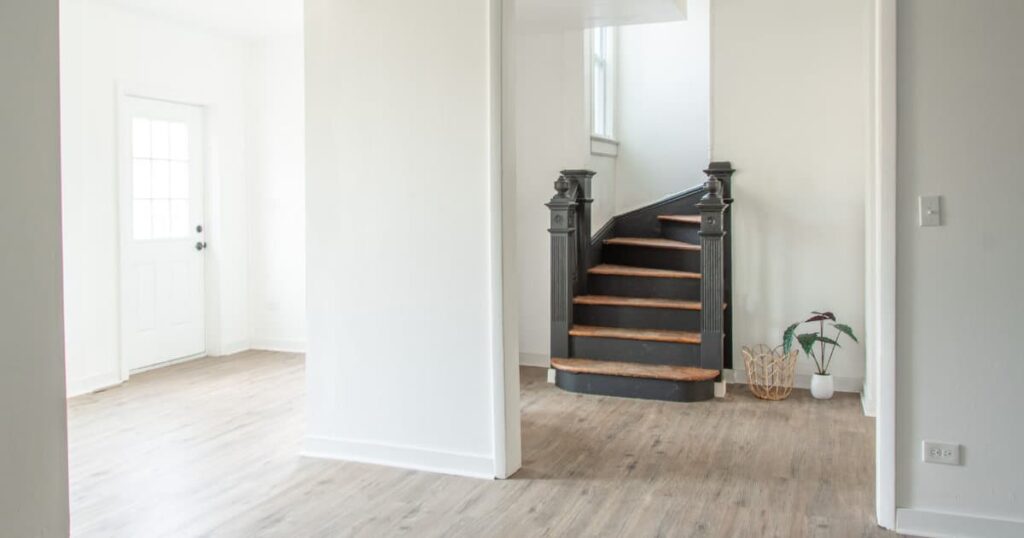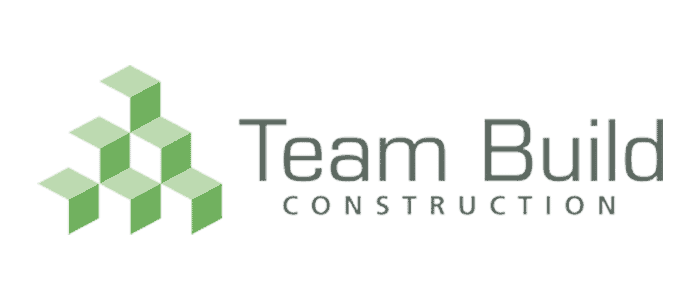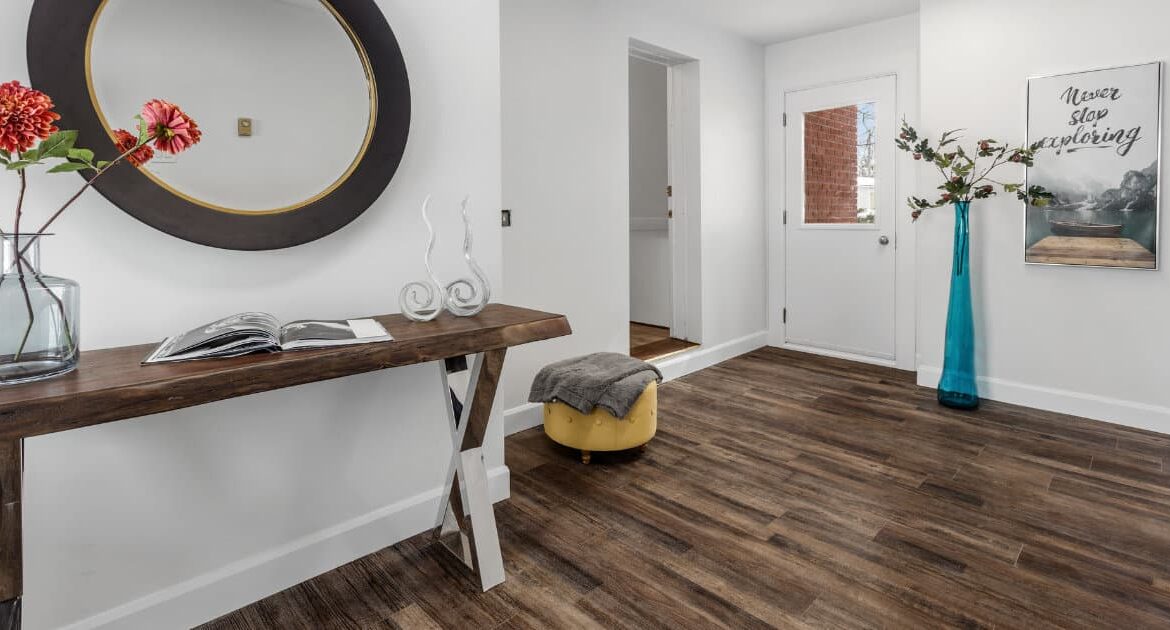
LVT, also known as Luxury Vinyl Tiling, is the culmination of a series of layers which come together to form a highly durable and hardwearing floor surface. But contrary to popular belief, long lasting doesn’t have to come at the expense of style and aesthetic presentation – as proved by each and every one of our projects pulled together with LVT flooring.
In this blog post, we will be introducing you to LVT as a potential solution for your next interior project or renovation – looking at what it’s made of, what the benefits are, and answering some of the most commonly asked questions we get from clients and customers.
LVT – What is it made of?
LVT is often mistaken for a hardwearing type of laminate which is less likely to peel. However, LVT boasts an entirely different material make up:
- Performance backing base layer of vinyl which holds the layers in place.
- A layer of PVC which is what gives the flooring its flexible yet stable and secure make up. The PVC is also what gives LVT its waterproof function.
- A photographic layer which is there for aesthetic value and presents the look that you are hoping for – generally a natural wood look.
- A scratch resistant top layer which protects the photographic presentation layer and is designed to keep the flooring in top condition.
The above layers are all connected under an intense heated pressure, for an optimum performance and finish.
Despite looking like wood, LVT is made primarily from PVC and the top scratch resistant layer, which gives it a plastic feel to the touch as opposed to a natural wood finish.
The benefits of LVT
Aside from being a more cost effective flooring type when compared with genuine hardwood, LVT is renowned for its durability and long lasting effect in the face of the wear and tear of daily life.
Whether selected for a hallway, living space, kitchen, or other interior room in your home, LVT is fully waterproof thanks to the protective layer on top and the PVC, and can be integrated within an underfloor heating system to great effect. When compared with standard laminate, this waterproofing means that LVT is an ideal solution which is not subject to warping.
LVT, as indicated by its full name, is designed and manufactured in tiles as opposed to planks – which also makes it much easier to install, and more cost effective to purchase with homeowners able to get a precise measurement and only pay for what they need. LVT is also a popular flooring type in commercial spaces thanks to its high level durability – with our team well accustomed to installing LVT flooring in schools, offices, village halls, and more.
Does LVT look like real wood?

The layer which sits just beneath the scratch resistant protective layer is made from an HD photographic print – using the very best technology to give each LVT tile an authentic and textured wood. Best of all, the top layer protects this image so that the aesthetic never becomes worn – allowing you to benefit from the look of natural wood but with none of the high maintenance upkeep.
But that doesn’t mean you can’t get creative with your LVT tiles. A stone effect aesthetic is also a relatively popular option, with the beauty of LVT being that you can alter the colour and natural patterning in your chosen design in order to mimic or compliment your existing design and interior style.
Things to be aware of when using LVT
While LVT is easy to maintain and even easier to install, when compared with natural hardwood it doesn’t offer the same value to a property or home.
In addition, LVT is not UV resistant and so can start to fade if it sits in direct sunlight over time.
The longevity of LVT – how to care for your flooring in the long term
The beauty of LVT flooring is that it is super low maintenance, scratch resistant, and is strong enough to safely and comfortably hold household appliances and furnishings like sofas, tables, and fridges among other things.
In order to keep your floor looking like new, regular vacuuming and mopping is recommended – not just around the outside of furnishings but beneath them as well. If your floor is particularly dirty, you can also add a drop of washing up liquid to warm water to create a more effective cleaner, or you can add apple cider vinegar to water for a deep clean.
For more advice on LVT and to decide if this is the right flooring option for you, get in touch with our team today.

